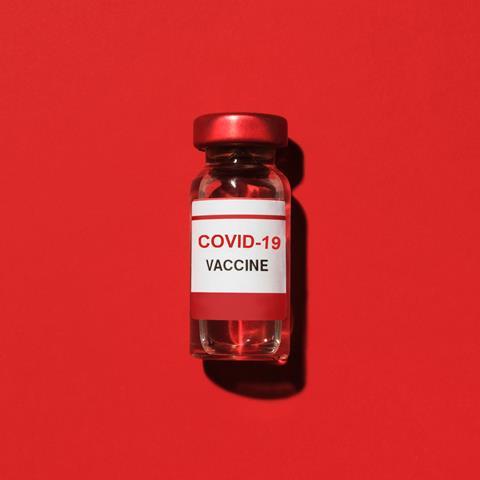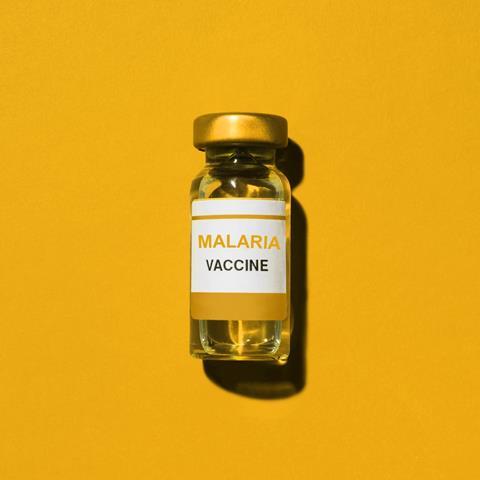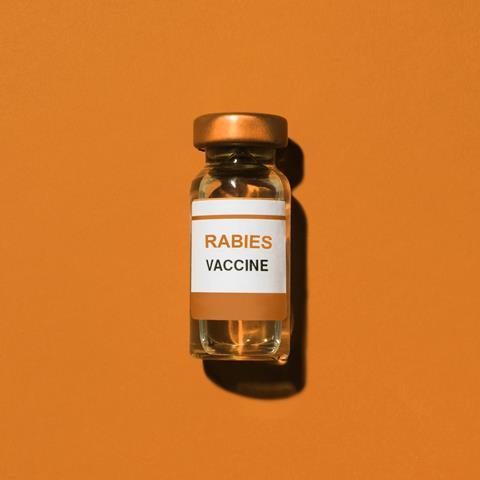Already hailed as a miracle, the new vaccine technology could protect us from other diseases, Clare Sansom finds
On November 9 last year, Natasha Loder, health correspondent at the Economist, was in a meeting – held, like every other one since March, on Zoom – when her editor got a message. ‘I’ve just got news that the Pfizer vaccine has over 90% efficacy… is that good? Where’s Natasha?’ She was, she remembers, ‘absolutely gobsmacked’ by this news. To develop an effective vaccine for a devastating pandemic disease less than a year after it first emerged was not just a remarkable achievement, it was, in Loder’s words, a ‘f*ing amazing’ one. The vaccine duly made it onto the front cover of the Economist, and just under a month later, at the University Hospital in Coventry, UK, 90-year-old Margaret Keenan received the very first vaccination against Covid-19 delivered outside a clinical trial. Not many vaccines today are as effective in the clinic as this one: most flu vaccines, for example, struggle to reach 50% efficacy. ‘The World Health Organisation would have accepted a Covid vaccine with 50% efficacy or less… to achieve over 90% protection even in the elderly was a tremendous achievement,’ says Christopher Green, a consultant in infectious diseases at University Hospital Birmingham, UK.
What has made this achievement even more remarkable is that it used a technology that had not been proved in the clinic for any disease. Loder remembers an early discussion with Adrian Hill, director of the Jenner Institute at the University of Oxford, UK, and a member of the group that developed the Oxford–AstraZeneca Covid vaccine, held before any of the vaccines were approved. Hill had explained that even calling this mRNA product a vaccine was ‘like calling something a car that you have never seen driven’. More remarkable still, however, is the promise that this development holds for diseases beyond Covid. Pfizer’s Covid vaccine, produced in collaboration with German biotech company BioNTech, is potentially the first in a series of vaccines for a wide range of infectious diseases, and not only viral ones.
The software of life
As many people who have been following the news will know, the active part of the Pfizer jab is messenger RNA, or mRNA. Stephen Hoge, president of Moderna, the US company that developed the second mRNA vaccine for Covid, has called mRNA ‘the software of life’. In the well-known central dogma of molecular biology, ‘DNA makes RNA makes protein’, the type of RNA that is directly involved as the intermediate in that pathway is mRNA. Put simply, when a particular protein is required by a eukaryotic cell, the part of the chromosome bearing the gene that encodes that protein will unwind, allowing a mRNA blueprint for the protein to be synthesised. The mRNA is chemically modified into its mature form and leaves the nucleus, where it attaches to ribosomes and forms a template for protein synthesis. Taking Hoge’s analogy further, the mRNA software sits between the storage (or DNA) and the applications (or proteins).

Most vaccines act by delivering either a dead or an inactivated form of a pathogen, or one of the proteins that characterise that pathogen, into our cells so that our immune system becomes ‘primed’ to respond quickly if it encounters that pathogen again in an infection. The basic principle behind these mRNA vaccines involves delivering the mRNA blueprint for the virus spike protein: the knob-like glycoprotein that decorates the viral surface and starts the infection process by binding to receptors on cell surfaces. Once this mRNA enters our cells, it can be recognised by our ribosomes just like any other mRNA, and they will synthesise copies of the spike protein that will, in turn, be recognised as ‘foreign’ and generate an immune response.
None of this would have been possible if mRNA vaccines had not been in development long before the Sars-CoV-2 virus emerged into the human population. Today’s vaccine developers owe much of their success to painstaking basic research by the groups of Drew Weissman and Katalin Karikó at the University of Pennsylvania in the US. One of the major drawbacks of using RNA as a vaccine or other therapeutic agent is that the nucleic acid itself can stimulate an intense immune response. The Karikó and Weissman groups were the first to show that this can be suppressed by modifying bases in the mRNA molecule. In both the Moderna and Pfizer vaccines in clinical use, all the uridine nucleosides have been replaced by 1-methyl-pseudouridine. This nucleoside is found naturally in some transfer RNA molecules, and it differs from uridine in that it replaces the nitrogen–carbon glycosidic bond with a carbon–carbon one, and one of the uracil ring nitrogen atoms is methylated.
On 9 September, Weismann and Karikó were named as joint winners of one of the 2021 Breakthrough Prizes, sharing $3 million
By 2011, the Karikó and Weissman groups had figured out how to make a mRNA molecule that would be safe in human cells, but not how to deliver it there. Messenger RNA is too large to be taken up efficiently by cells, and it is vulnerable to breakdown by ribonuclease enzymes (RNases). That was the year when Norbert Pardi, now an assistant professor at the University of Pennsylvania, joined the group. ‘I come from the same Hungarian small town as Katalin [Karikó], and when I was an undergraduate student in Hungary, I often used to talk science to her when she visited her mom during the summer,’ he says. ‘It is not surprising that I chose to join her group when I finished my PhD, and to study RNA vaccines.’
Three years later, Pardi was first author on a paper that demonstrated a way of solving the delivery problem by enclosing the mRNA molecules in lipid nanoparticles. Lipid nanoparticles were first designed to deliver small interfering RNA (siRNA) molecules, but these are equally suitable for mRNA. ‘These nanoparticles have four different lipid components, including ionisable cationic lipids,’ says Pardi. ‘Unlike many conventional liposomes, they don’t bind to serum proteins in the bloodstream, they are much less toxic and facilitate cellular uptake of mRNA molecules.’ Similar nanoparticles have been used in the current Covid vaccines. And on 9 September Weismann and Karikó were named as joint winners of one of the 2021 Breakthrough Prizes, the world’s most lucrative awards in science and mathematics, sharing $3 million (£2.3 million).
Hope for malaria
The Weissman group’s most recent review of mRNA vaccine development was published in Current Immunology in March 2020, meaning the results it reported predated the current pandemic and the opportunity to prove their technology in the clinic. The pre-clinical trials of mRNA vaccines described there involved rodent models of disease, and they noted that it was hard to replicate the ‘often remarkable immunogenicity’ seen in these studies in human trials.

Some of the group’s most promising work, however, has been in malaria: a disease that still kills close to half a million each year, mainly children under five. The only approved malaria vaccine, Mosquirix, requires four jabs and has relatively low efficacy. Weissman and his colleagues chose to investigate an mRNA that encodes a protein expressed on the coat of the invasive-stage malaria parasite. They encapsulated a stable form in a nanoparticle similar to those used in the Covid vaccines, and showed that it elicits an immune response in mice that is strong enough for it to be labelled as a ‘compelling candidate for further investigation’ in human trials.
It is often stated that ‘vaccines don’t save lives: vaccinations do’. Even at the beginning of the Covid pandemic, before any more infectious variants had emerged, best estimates suggested that inducing global herd immunity (and so, eventually, eliminating the virus) would require some 5.5 billion people, or about 70% of the total population, to be vaccinated. Current estimates are considerably higher: in fact, many scientists suggest that the virus cannot now be eliminated and will instead become endemic, affecting largely vaccinated populations rather like seasonal flu. ‘As soon as I heard those efficacy figures, I realised that we would need billions of doses of this vaccine,’ says Loder. ‘And I knew this would require vaccine distribution at an industrial scale that is unprecedented for any medical product, anywhere.’ And the logistical effort is made more challenging by the instability of mRNA, which means that these vaccines must be kept at temperatures well below 0°C until they can be used. When the Pfizer vaccine was first produced, it was in a formulation that had to be stored at –70°C.
A cold problem
Even if you ignore the political dimension, it is self-evident that vaccine distribution presents far greater logistical challenges in poor countries than in rich ones and, to some extent, in rural areas than in urban ones. The Oxford–AstraZeneca vaccine, which uses a more traditional technology – a genetically-modified adenovirus vector – and can be stored in an ordinary vaccine fridge, is the mainstay of the Covid vaccination programme in low and lower-middle income countries (LMICs). However, a programme that needs to deliver billions of vaccines cannot rely on just one product. By August 2021, the Oxford–AstraZeneca vaccine had been or was being used in 176 countries and territories worldwide, but the mRNA vaccines were not far behind. Pfizer’s vaccine is used in 125 countries, and Moderna’s in 72; many of these are LMICs. And the challenge of keeping the doses stable until they can be delivered has required an expansion of advanced cold-chain technology into countries that have never before known a need for it.
For many decades, vaccination campaigns have been plagued by cold chain problems. The WHO estimates that about 25% of all liquid vaccines cannot be used due to broken cold chains, and this problem is, of course, particularly acute in LMICs.

If a vaccine cannot be manufactured in the country in which it is to be used – which, sadly, is almost always the case in LMICs – the cold chain in that country starts when an aircraft carrying vaccine lands at an airport with warehouses and freezers that can be kept at an appropriate temperature. Even that can be a challenge, for example if electricity supplies are unreliable. After that there can be as many as 10 different stages, each of which has to be precisely temperature controlled, before the ‘last mile’ delivery to a local health centre, to a nurse, and, eventually, into residents’ arms.
‘At this last stage, the vaccines are kept in a highly insulated cold box, packed with dry ice’ says Toby Peters, a professor in cold economy at the University of Birmingham, UK. ‘We have never before had to do anything like this: delivering vaccines that are so delicate and have such extreme storage requirements, at such speed and volume to so many locations in LMICs,’ he adds.
Once the cold chain is in place, it completely changes the business model for the delivery of further vaccines
Setting up cold chains to deliver Covid-19 vaccines, however, has one key benefit: they don’t have to be dismantled when that vaccination programme is complete. Freezers installed to store vaccines at, say, –70°C, can stay in place, and they don’t need to stay switched on. They will be ready as and when any mRNA vaccines for diseases that are endemic in these countries enter clinical use, and although it is difficult to predict the stability of any mRNA construct in advance, it is very unlikely that there will be a need to store vaccine at even lower temperatures. ‘Once the cold chain is in place, it completely changes the business model for the delivery of further vaccines or other mRNA therapeutics,’ says Peters. And if a malaria vaccine could be successfully delivered to rural health centres in LMICs, for example, it could be a game-changer.
African countries currently import almost all their routine vaccinations, and it is also the region that is least well served by the current Covid vaccines: only a few percent of the African population is fully vaccinated, compared to, for example, over 65% in the UK. African countries are reliant on the UN’s Covax programme for vaccines, but this frequently stalls because of supply problems. One crucial step forward in improving access to mRNA vaccines in LMICs, not least by shortening and simplifying the cold chains, would be to manufacture them closer to home.
Much has been written about the deadlocked calls for patent waivers for Covid vaccine technology, but these patents alone would not be enough to start the vaccines flowing: vaccine factories need sophisticated equipment and a skilled workforce. The WHO is proposing to establish a technology transfer hub in South Africa, with local companies as partners, and the vaccine platform chosen is the mRNA one. However, neither Pfizer nor Moderna has shown any interest in sharing their technology. The hub could work with mRNA vaccines being developed by other, less established companies, but it would take longer to come onstream. Without these established partners, the earliest an all-African vaccine could begin to trickle off the pipeline would be late in 2022.
The next challenges
And would that be worthwhile, if Covax can fill the gaps in the meantime? Certainly, but not predominantly for Covid vaccines. The Gates Foundation has provided millions of dollars to companies including BioNTech to develop mRNA-based vaccines for many more diseases endemic in LMICs. Ever the optimist, Bill Gates told USA Today in January 2021 that ‘we just need to mess around [with] a lot of lipid nanoparticles’ and predicted that, within five years, it should be possible to create new mRNA vaccines cheaply and with even less lead time than the 10 months from the sequencing of the Sars-CoV-2 genome to that breathtaking press release.
The next challenges
The Gates Foundation has provided millions of dollars to companies including BioNTech to develop mRNA-based vaccines for many more diseases endemic in low- and middle-income countries. Ever the optimist, Bill Gates told USA Today in January 2021 that ‘we just need to mess around [with] a lot of lipid nanoparticles’ and predicted that, within five years, it should be possible to create new mRNA vaccines cheaply and with even less lead time than the 10 months from the sequencing of the Sars-CoV-2 genome to that breathtaking press release.
The havoc that Covid-19 has caused across the world arises primarily from how infectious it is; even in unvaccinated populations, it has an average fatality rate of under 1% of those infected. Rabies is a viral disease that is right at the other end of the spectrum. Human to human transmission is virtually unknown and the disease itself is rare, but only fourteen people are known to have survived after showing symptoms and there are no vaccines that provide lasting immunity.

The rabies virus is both an important target for vaccine development and a particularly tractable one as the WHO has precisely defined a minimum level for an ‘acceptable’ immune response. CureVac, a German biopharmaceutical company, began testing a rabies vaccine based on its novel RNActive platform well before the Sars-CovV-2 virus emerged. This uses a mRNA construct that, unusually, stabilises the nucleic acid without modifying its nucleotides, and the vaccine is enclosed in lipid nanoparticles that are very similar to those used by Pfizer and Moderna. ‘This produces an immune response that is closer to the “natural” one produced by the pathogen than it would have been if the bases had been modified,’ says Lidia Oostvogels, a vice-president at CureVac.
The company recently published the first results of a trial in human subjects and showed the vaccine to be safe and to produce a strong immune response. ‘As rabies is invariably fatal, we have a homogeneous population with no natural immunity to work with, which makes the vaccine easier to assess,’ adds Oostvogels. The rabies programme is now cranking back up again after a pandemic-induced pause. ‘If this vaccine is licensed for clinical use, it will not only prove the principle of our mRNA platform, but meet an important medical need,’ she concludes.
The Covid-19 pandemic could prove to be the great accelerator of vaccine technology
Juliana Haggerty, grand challenge lead at CPI’s new centre for excellence in RNA technology in Darlington, UK, believes that the next disease to be targeted by mRNA vaccine technology will be a much more familiar one: influenza. A new flu vaccine has to be produced every year to match the circulating virus strains, and the time it takes to design and develop each vaccine makes this a rather hit and miss process. A miss will lead to a poor match between vaccine and strain, an ineffective vaccine and sometimes a flu epidemic. ‘The mRNA approach can be almost “plug and play”, so vaccine design becomes much faster and the whole process can begin later, when more is known about which strains are circulating and the chances of a good match are higher,’ explains Haggerty. And this speed will be even more important the next time a virus with pandemic potential emerges, as it must do sooner or later. ‘We would aim to complete the process “from sequence to arm”, which took 300 days with Covid-19, in a mere 100 days,’ adds Lucy Foley, biologics business unit director at CPI.
It is most unlikely that this technology will completely ‘fill in [all] the missing vaccines’ as Gates hopes. We can, however, now safely predict that it will fill some important gaps. ‘The Covid-19 pandemic could prove to be the great accelerator of vaccine technology, rather like nuclear power after world war two,’ suggests Green. And if it does, the most significant advances are likely to be those that use mRNA.
Clare Sansom is a science writer based in Cambridge, UK













No comments yet